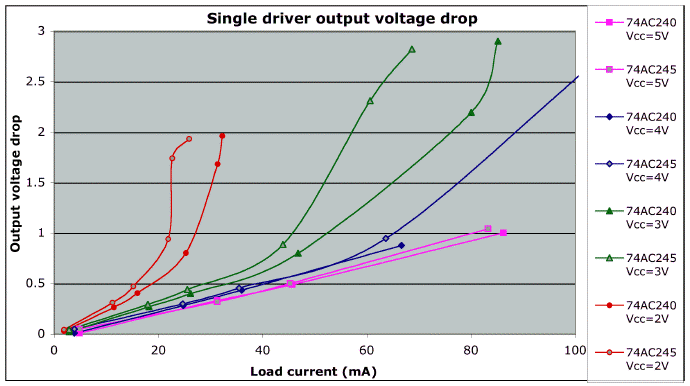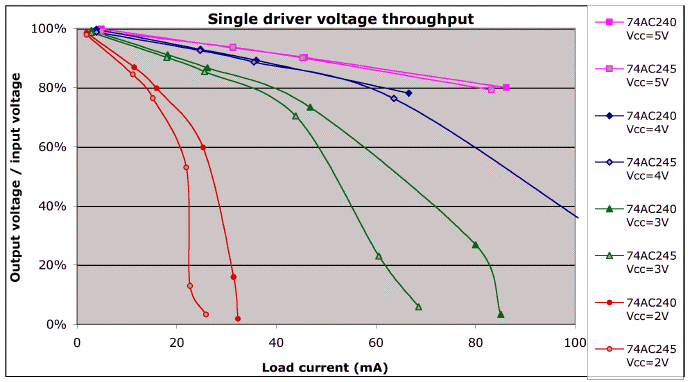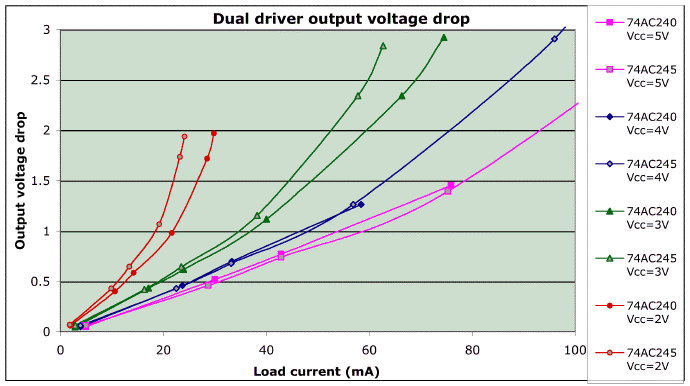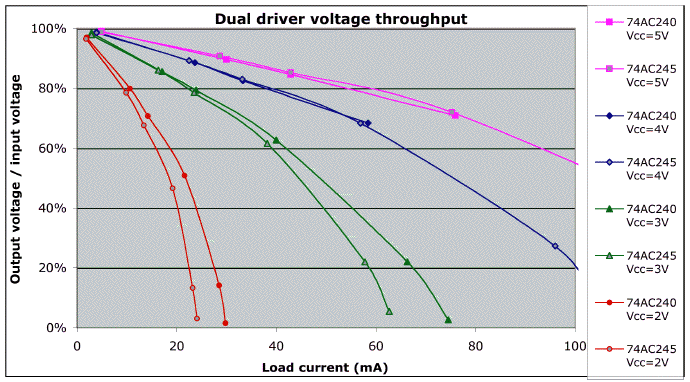|
|
The BEAM Circuits Collection is a BEAM Reference Library site.
74*24x-based motor drivers
compared
Very similar, but you need to
know the differences
In many ways, both the 74*240 and 74*245 are equally handy for BEAM use; both have 20 pins, and so the main difference that most folks will care about is that one inverts drive inputs, while the other doesn't. Out of curiousity, I decided to torture test the two chips to see how they compared under load.
As I've noted on the 74*240 and 74*245 drive pages, the available drive current is a function of both your supply voltage, as well as of the output voltage you can tolerate. Below, I've plotted a comparison of the data I collected from these chips:
As you can see, the chips behave very similarly (more so than I really expected). In fact, you only see much of a difference when you really push the chips to their limits.
|
|
||
|
|
This page was last updated on |
|



